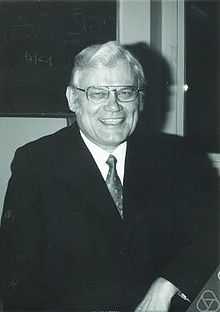Emanuel Sperner

Emanuel Sperner (9 December 1905 – 31 January 1980) was a German mathematician, best known for two theorems. He was born in Waltdorf (near Neiße, Upper Silesia, now Nysa, Poland), and died in Sulzburg-Laufen, West Germany. He was a student at Hamburg University where his advisor was Wilhelm Blaschke. He was appointed Professor in Königsberg in 1934, and subsequently held posts in a number of universities until 1974.
Sperner's theorem, from 1928, says that the size of an antichain in the power set of an n-set (a Sperner family) is at most the middle binomial coefficient(s).[1] It has several proofs and numerous generalizations, including the Sperner property of a partially ordered set.
Sperner's lemma, from 1928, states that every Sperner coloring of a triangulation of an n-dimensional simplex contains a cell colored with a complete set of colors.[2] It was proven by Sperner to provide an alternate proof of a theorem of Lebesgue characterizing dimensionality of Euclidean spaces. It was later noticed that this lemma provides a direct proof of the Brouwer fixed-point theorem without explicit use of homology.
Sperner's students included Kurt Leichtweiss and Gerhard Ringel.
References
External links
- Emanuel Sperner at the Mathematics Genealogy Project
- Sperner's photos – from the Mathematical Research Institute of Oberwolfach
|